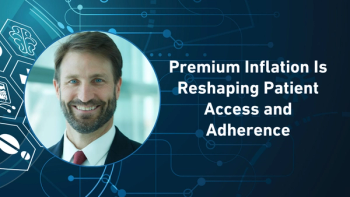
- Pharmaceutical Commerce - July/August 2009
The Rise of 'Companion' Diagnostics for Specialty Pharmaceuticals
Under the theme of personalized medicine, in vitro diagnostics will play an increasingly important role in new drug entries and new therapies
Diagnostics 2009* is the first edition of an annual review of deal activity in the in vitro diagnostics (IVD) sector and significant events for personalized medicine, a field which is fast rising to prominence in healthcare innovation. Personalized medicine, as defined by the US National Cancer Institute, is the use of information about a person’s genes, proteins, and environment to prevent, diagnose, and treat disease. Personalized medicine was a significant theme in IVD deal-making in the past year; it was prominent in both M&A and licensing. We expect continued interest in personalized medicine in future deals even if past investments have not yet translated into significant revenues. The future revenue growth prospects will be fuelled by seven drivers:
1. The growing Dx-Rx companionship
One driver will be the growing companionship between diagnostics and pharmaceuticals in guiding drug use. The foundation is already there with the FDA reporting 28 genomic biomarkers considered as valid to provide guidance on the prescription of FDA approved drugs. Only four of these biomarkers were actually “required” to be tested for by the FDA at the moment of writing this report. However, a dynamic has started which, together with efforts at other agencies—for example at the European Medicines Evaluation Agency (EMEA), which already requires biomarker testing for at least eleven drugs—should promote a growing use of biomarker testing as part of drug development and prescribing.
2. The rising hurdles in drug development
The current entente cordiale between the pharma and diagnostics industries could become an entente nécessaire should the FDA “insist on” rather than just “encourage” the use of a biomarkers and diagnostics to guide drug development. Some would argue that such necessity is de facto already in place as it is becoming always more challenging to promote the value of an expensive drug without having a companion diagnostic to ration or justify its use on a patient by patient basis.
3. The regulatory pathways debate
Another driver will be the outcome of the on-going discussions about the current diversity in regulatory pathways for the commercialization of diagnostics, including the Clinical Laboratories Improvement Amendments (CLIA) regime for laboratory developed tests and the FDA requirements for in vitro diagnostics sold as kits.
4. The access to high quality patient data
Access to patient samples will be a key ingredient for successful research. This is motivating some emerging diagnostics companies to keep commercialization rights for selected territories when negotiating licensing deals with larger partners. An alternative approach is to access patient data through tissue banks like the one being developed in Luxembourg. In this context, a further driver of sustainable, long-term future growth is the quality and standards of sampling and storage of relevant specimens. Good science will not be sufficient to develop good assays without good materials. In this context, nondiscrimination legislation such as the US Genetic Information Nondiscrimination Act of 2008 (GINA) will also help by encouraging people to donate specimens.
5. The clinical laboratory diversification
Developing a clinical laboratory activity alongside the product development business is an obvious diversification opportunity for IVD players as well as another avenue to access patient data.
6. The reallocation of venture funding
The current funding squeeze may benefit diagnostics companies as some funds will see the attraction of IVD businesses over the riskier ventures in therapeutics. Those businesses incorporating a service based revenue stream may even convince the more risk-averse principals to invest.
7. The reimbursement maze
The current procedures to obtain reimbursement status for an IVD product tend to be complex and vary significantly from one country to another. Greater harmonization across countries would be a breath of fresh air. Products to enable more personalized medicine should be seen more favorably under current budgetary constraints. They can help avoid the use of expensive drugs for certain patient subpopulations where a diagnostic predicts they would cause significant side effects without any efficacy benefits.
ABOUT THE AUTHOR
Gerry McDougall is partner in charge of PricewaterhouseCoopers’ Health Sciences Practice serving the top 50 life sciences and healthcare organizations. He is a lead spokesperson on PwC’s personalized medicine initiative and has worked on the development of large-scale research centers of excellence and consortia, including the Translational Genomics Research Institute (TGen) in Arizona and the Integrated Biobank of Luxembourg (IBBL).
*This article is excerpted from Diagnostics 2009: Moving Towards Personalised Medicine, available at pwc.com.
Articles in this issue
over 16 years ago
Our Readiness for the Attack of the Flu Bugover 16 years ago
The State of the Industry in Product Securityover 16 years ago
The Business Value of Brand Protectionover 16 years ago
MeadWestvaco Readies Portable Medication Packagingover 16 years ago
Oncology Drugs Add Promise, Stresses to Healthcare Deliveryover 16 years ago
On-Demand Digital Printing Rewires Pharma Packagingover 16 years ago
Labels & Package Content Continue to Attract Regulatory FocusNewsletter
Stay ahead in the life sciences industry with Pharmaceutical Commerce, the latest news, trends, and strategies in drug distribution, commercialization, and market access.




